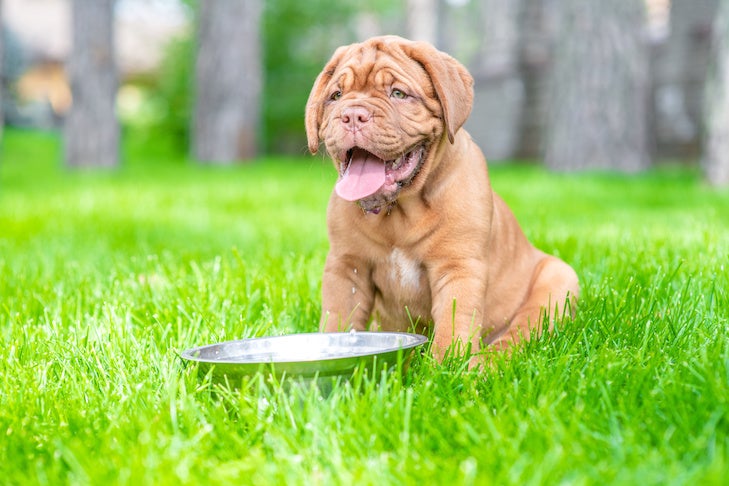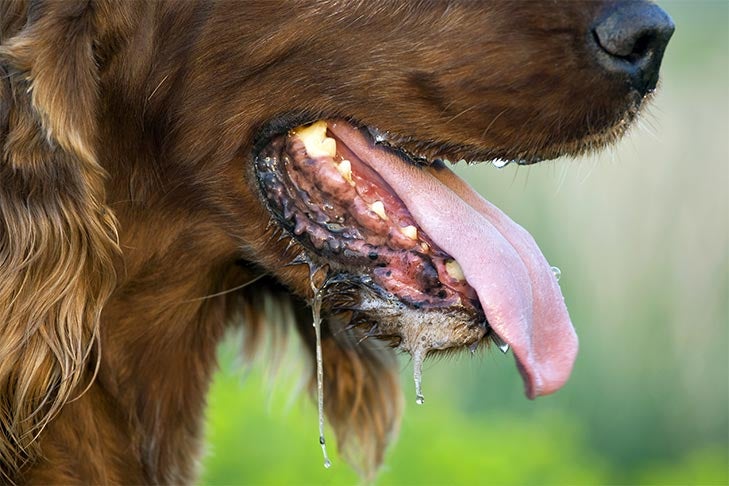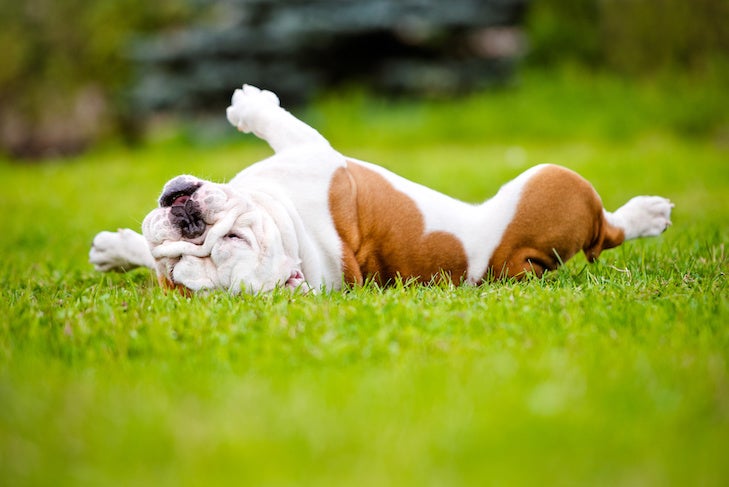AKC is a participant in affiliate advertising programs designed to provide a means for sites to earn advertising fees by advertising and linking to akc.org. If you purchase a product through this article, we may receive a portion of the sale.
It was a warm spring day, and a neighbor and I were watching some dogs charging around playfully in a fenced, dog-park area, seemingly oblivious to the heat. My neighbor commented, “You know, if we were running around like that we would be drenched in sweat. Dogs must be marvelously adapted to handle the heat.”
In truth, dogs are designed to handle cold better than heat. For humans, our major method of keeping cool is through perspiration. As our sweat evaporates, it results in a cooling effect, which lowers our body temperature. Dogs don’t.

Dogs have two types of sweat glands—merocrine glands (similar to human sweat glands) and apocrine glands. Merocrine glands are not widely distributed as they are in people but are mostly found in the paw pads. Sweating through their paws helps dogs cool down, at least a little.
The apocrine glands are located throughout the body. These also produce sweat in dogs, but this type of sweat doesn’t serve a cooling function. Rather, apocrine sweat contains pheromones, which are scent cues that convey information about the dog and help dog-to-dog communication.
Open Wide
The major way in which your dog cools down is through panting. This is their primary means of thermoregulation (an animal’s ability to keep their body temperature within safe boundaries). When your dog needs to cool down, their tongue may hang out of their mouth and their breathing will speed up.
Dogs have a typical resting respiratory rate of 15 to 30 breaths per minute, but this rate can get significantly faster when panting. Panting moves the hot air in and out, and that airflow increases moisture evaporation from the mouth, mucous membranes of the nasal passages, and lungs. This effectively cools the body from the inside out.
The hotter your dog is, the faster and harder they may pant. You may have noticed that sometimes your dog will pause in their panting to take a deep breath, then return to short, rapid breathing. That’s because panting is not an effective way of exchanging air in the lungs. The panting pause occurs because your dog is taking a large breath to maintain oxygen levels in the blood.

Dogs have another interesting and unique way to help them cool down and this is through a process called vasodilation, where the blood actually seeks to cool itself. The process involves the blood vessels expanding and rising toward the skin level, where the external air can then cool the blood before it returns to the heart. Vasodilation occurs mostly in the face and ears.
Canine Cool-Downs
Dogs have behavioral tricks they use to keep cool. Obviously, seeking shade is helpful, as is stretching out flat on a tile floor, with their belly to the ground and their paws splayed out. The fur on the dog’s belly is thinner than the fur on the upper part of their body, so the cool ceramic floor helps lower their body temperature.
In the absence of a cool floor, dogs may roll over onto their backs, exposing their underside. It’s another way to take advantage of that thin belly fur since it gives a chance for the cooler outside air to draw away some of their internal body heat.

Unfortunately, none of these canine cooling methods are as effective as sweating is for humans. This means that dogs are at risk of heat stress and, more dangerously, heatstroke, as the body temperature rises to life-threatening levels.
The best strategy is to simply avoid situations where your dog might overheat. That means keeping your dog indoors during the hottest parts of the day and making sure that they have lots of water to drink. Cooling mats and cooling vests, frozen water bottles in your dog’s crate, and crate fans can help cool your dog while on the road or at dog-sport events. One of my favorite tricks is to freeze an ice cube tray full of chicken bouillon and toss one of these frozen “popsicles” to my dog to help keep them cool and hydrated on hot days.
 This article originally appeared in the award-winning AKC Family Dog magazine. Subscribe today!
This article originally appeared in the award-winning AKC Family Dog magazine. Subscribe today!
This article is intended solely as general guidance, and does not constitute health or other professional advice. Individual situations and applicable laws vary by jurisdiction, and you are encouraged to obtain appropriate advice from qualified professionals in the applicable jurisdictions. We make no representations or warranties concerning any course of action taken by any person following or otherwise using the information offered or provided in this article, including any such information associated with and provided in connection with third-party products, and we will not be liable for any direct, indirect, consequential, special, exemplary or other damages that may result, including but not limited to economic loss, injury, illness or death.


